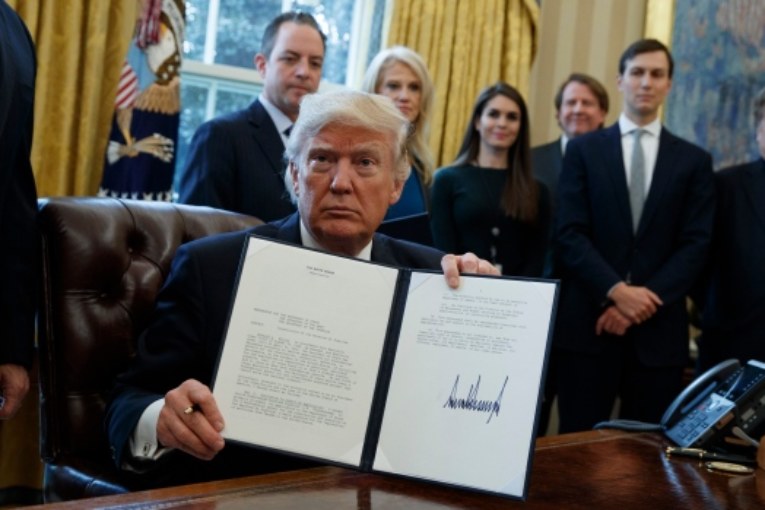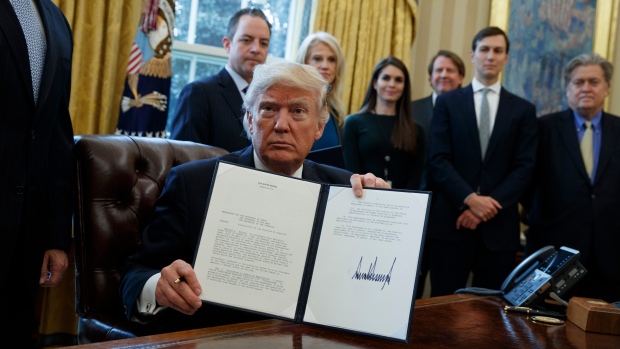

WASHINGTON – In an apparent bid to kick-start the long-stalled Keystone XL oil pipeline, President Donald Trump on Friday issued a new presidential permit for the project, two years after he first approved it and more than a decade after it was first proposed.
Trump said the permit issued Friday replaces one granted in March 2017. The order is intended speed up development of the controversial pipeline, which would ship crude oil from tar sands in western Canada to the U.S. Gulf Coast.
A federal judge blocked the project in November, saying the Trump administration had not fully considered potential oil spills and other impacts. U.S. District Judge Brian Morris ordered a new environmental review.
An appeal filed by the project’s developer, Calgary-based TransCanada, is pending.
The company said in a statement that Trump’s order “clarifies the national importance of Keystone XL and aims to bring more than 10 years of environmental review to closure.”
Trump “has been clear that he wants to create jobs and advance U.S. energy security, and the Keystone XL pipeline does both of those things,” said Russ Girling, TransCanada’s president and CEO.
Keystone XL will create thousands of jobs and deliver crude oil to U.S. refineries “in the safest, most efficient and environmentally sound way,” the company said.
But project opponents said the White House order would not have an immediate impact.
Stephan Volker, an attorney for environmentalists who sued to stop the project, said he had not yet reviewed Trump’s permit declaration but could not foresee any action that would allow work on the pipeline to proceed without court approval.
“It would be highly unlikely that any court would allow an end-run on its well-considered injunction that’s been affirmed by the Ninth Circuit (Court of Appeals). The likelihood of that is virtually non-existent,” Volker said.
The Keystone XL, first proposed in 2008 under President George W. Bush, would begin in Alberta and go to Nebraska, where it would join with an existing pipeline to shuttle more than 800,000 barrels a day of crude to terminals on the Gulf Coast.
After years of delay, former President Barack Obama rejected the project in 2015. Trump reversed that decision soon after taking office in 2017, saying the $8 billion project would boost American energy and create jobs. A presidential permit is needed because the project crosses a U.S. border.
After environmental groups sued, Morris said the administration had not fully considered potential oil spills and other impacts and that further reviews were needed.
TransCanada disputes that, saying Keystone XL has been studied more than any other pipeline in history. “The environmental reviews are clear: the project can be built and operated in an environmentally sustainable and responsible way,” Girling said.
___
Associated Press writer Matthew Brown in Billings, Mont., contributed to this story.
You can read more of the news on source



